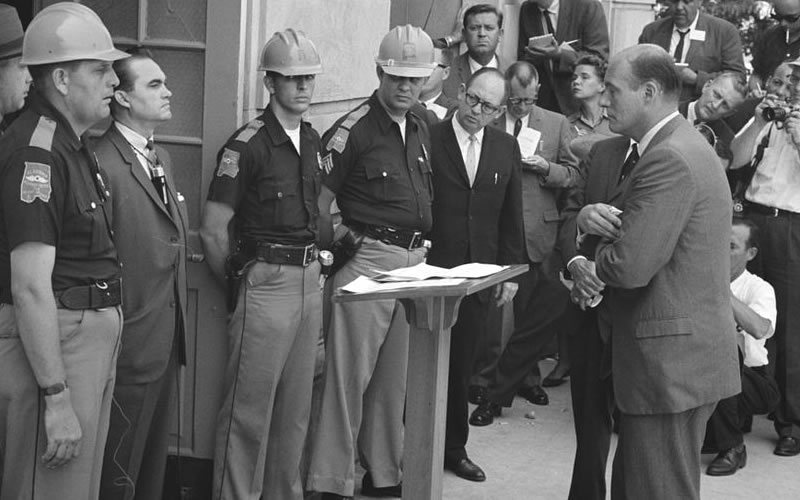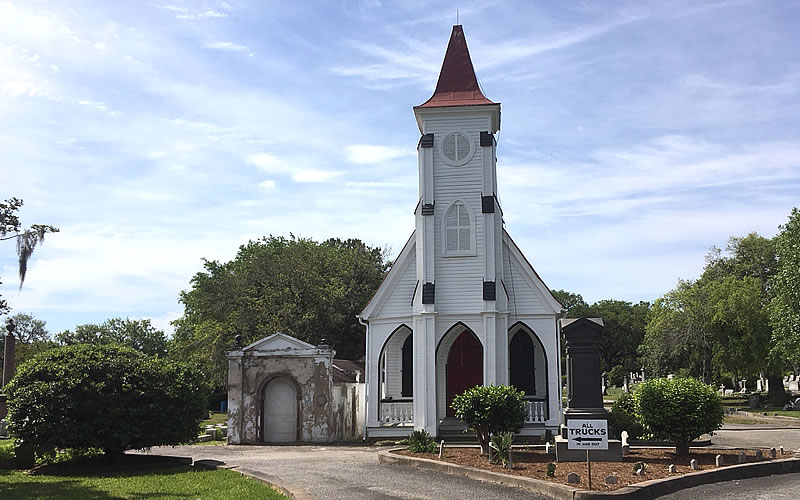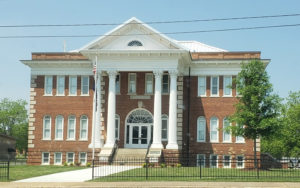 NEWS: Lawmakers close in on binding bid process for Santee Cooper
NEWS: Lawmakers close in on binding bid process for Santee Cooper
BRIEFS: Lawmakers work on consensus on major bills next week
COMMENTARY, Brack: Anti-abortion zealots, pawns use big government to narrow democracy
SPOTLIGHT: S.C. Senate Democratic Caucus
FEEDBACK: Send in your thoughts
MYSTERY PHOTO: Tall, interesting building
S.C. ENCYCLOPEDIA: Education in South Carolina
NEWSBIG STORY: Lawmakers close in on binding bid process for Santee Cooper

By Lindsay Street, Statehouse correspondent | The General Assembly might have a clearer pathway next week for dealing with Santee Cooper after almost two years of headaches following a $9 billion debacle over construction of two new nuclear reactors.
Lawmakers are seeking a way to accept binding bids for Santee Cooper on everything from selling the utility to getting a private utility to run it. Even if lawmakers approve a plan to take bids on various options, they’ll still need another General Assembly vote to decide Santee Cooper’s future.
As early as Monday morning, six lawmakers tapped for a conference committee could decide on key differences on a bill outlining bid evaluations. Differences include whether the bidding process should have a deadline, whether they should allow bids to include ownership of two lakes in the Lowcountry and whether the process will be overseen by a Virginia-based consultant who oversaw initial bids last year and part of this year.
Senate Majority Leader Shane Massey, R-Edgefield, told Statehouse Report Thursday that he expects the differences to be resolved Monday, despite it taking “a lot of work.” S.C. Rep. Russell Ott, D-Calhoun, called an initial conference meeting Thursday “productive” and said he also expected the conference committee to come to an agreement next week. Santee Cooper conference committee members include: Ott, Massey, House Ways and Means Chairman Murrell Smith, R-Sumter, House Speaker Jay Lucas of Hartsville, Senate Minority Leader Nikki Setzler of Lexington, and Senate Judiciary Chair Luke Rankin of Horry.
An agreement will then be voted on in a special session, which is slated to begin noon Monday. The session has been called to iron out differences between some House and Senate bills. Key among those next week will be the Santee Cooper bill, the budget and an incentives package to lure the NFL’s Carolina Panthers to South Carolina
Background
 Santee Cooper, which has nearly 1 million electric meters throughout the state between direct-serve customers and those served through electric cooperatives, became ensnared in controversy for its minority role in a scuttled nuclear reactor project in 2017. The public utility pulled the plug on its 45 percent share in the project, which racked up $9 billion in debt and was never completed. The majority-owning private company, South Carolina Electric and Gas, was sold to Dominion Energy in the fallout.
Santee Cooper, which has nearly 1 million electric meters throughout the state between direct-serve customers and those served through electric cooperatives, became ensnared in controversy for its minority role in a scuttled nuclear reactor project in 2017. The public utility pulled the plug on its 45 percent share in the project, which racked up $9 billion in debt and was never completed. The majority-owning private company, South Carolina Electric and Gas, was sold to Dominion Energy in the fallout.
Now, lawmakers are in their second year of mulling privatization. In 2018, a joint committee was established to evaluate preliminary bids. Seven non-binding purchase offers and eight other offers that looked at partial acquisition or management of the utility were made to lawmaker-hired ICF, a global consulting services firm that works with clients to manage big problems.

S.C. Sen. Larry Grooms, the Berkeley County Republican who represents Santee Cooper’s district and has been opposed to the bidding process, said the lawmaker-led evaluations of the utility are not set up to determine its worth but to ultimately execute its sale. He also said there is a lot of misinformation about the utility that make it seem inefficient.
“One of the reasons this is complicated is that in the history of the United States, no state has sold an asset as large as Santee Cooper,” Grooms said in April on the Senate floor. “There is no precedent for something this large.”
Those pushing the bid evaluation system counter that it’s only to entertain binding offers from potential buyers — and won’t lock the state into any sale that the General Assembly doesn’t approve.
“Anyone that has already come to that conclusion (to sell or not) is acting very prematurely. I don’t think anyone should have the opinion that we should sell or that we shouldn’t sell,” Ott said. “We don’t have enough information yet.”
Santee Cooper and the budget
The House and Senate passed differing versions of H. 4287, a bill to deal with Santee Cooper’s challenges, before the end of regular session. The bill is currently in conference committee through which three members of the House and three members of the Senate are working for a compromise on differences. The conference committee will meet Monday prior to a special session slated for next week. And conference agreement will then need to be voted on by the General Assembly.
Members of the budget conference include: Senate Finance Chair Hugh Leatherman of Florence, House Ways and Means Chair Smith, House Majority Leader Gary Simrill of York, House Minority Leader Todd Rutherford, D-Richland, and Sens. Sean Bennett, R-Dorchester, and Darrell Jackson, D-Richland.
The House version of the budget also includes a proviso that directs an evaluation process for privatization or management of Santee Cooper, making the two conference efforts linked. The House would likely have to remove its proviso from the budget to agree with the Senate — a move they may be reticent to make without an agreement on Santee Cooper in the other committee, Grooms said.
Some senators, like Grooms, are speculating that the House could delay passing a compromise on the state budget next week until the question of Santee Cooper is resolved. Should House members hold out on the budget, it could delay the special session until Tuesday.

But Ott said he doubted House Ways and Means Chairman Murrell Smith, R-Sumter, and House Speaker Jay Lucas of Hartsville, both of whom did not return inquiries, would hold the budget “hostage” over a Santee Cooper deal. He said House members are committed to passing the budget.
Rutherford said no one has said anything to him about not signing off on the budget until the Santee Cooper question is resolved.
Unclear on utility’s worth
Santee Cooper reports about $2 billion in annual revenues from its electricity generation and transmission. It has about $7 billion of debt, about half of which is tied to the defunct V.C. Summer nuclear project. ICF estimated the utility’s worth to be between $8.1 to $10.1 billion, which some say would be a deal for large utilities looking to gain a large number of meters in a growing market like South Carolina.
Supporters say the utility is plenty nimble and efficient. Documents from the utility show that it paid the state $17.5 million this year, and had $850 million in cash on hand as of March 30.
“I’m asking them what problems are you trying to solve? Santee Cooper has the lowest rates in the state … the strongest environmental record in the state, the strongest safety record … and in terms of economic development they can’t be touched,” Grooms said.
Those encouraging the bidding process say the utility is a debt-laden dinosaur that can no longer offer the best rates for customers in the state. And if the right bid doesn’t come in?
“You can always keep Santee Cooper, restructure it and make some changes,” Charleston Republican Sen. Paul Campbell said.
Presbyterian College Professor of Economics and Business Administration Jody Lipford said understanding the market-worth of Santee Cooper is difficult.
“You don’t have this concrete market valuation for the company and that could mean it’s more subject to interpretation,” Lipford said. “It makes the whole thing more gray and not black and white.”
As for selling the utility, the decision also isn’t black and white.
“This is not strictly an economic decision; this is also a political decision,” Lipford said. “(Lawmakers) have constituents they have to think about.”
- Have a comment? Send to: feedback@statehousereport.com
NEWS BRIEFS
Lawmakers work on consensus on major bills next week

By Lindsay Street, Statehouse correspondent | State lawmakers are rolling back into Columbia beginning Monday for a planned special session.
The first year of the two year session ended May 9, but with several key bills awaiting agreement between the two bodies — including the state spending plan — leaders sought a special session. It is currently scheduled for noon Monday in both bodies, and will address a shortened calendar that should only bring lawmakers to Columbia for a few days
The three top conference priorities are a resolution on how to evaluate bids for public utility Santee Cooper (see today’s top story), the $9.3 billion state budget (see our previous coverage on differences between the House and Senate version), and a $115 million incentive package to the NFL’s Carolina Panthers.
Any gubernatorial veto of the budget or any other bill coming out of the special session would require a second special session or for lawmakers to wait until January to address it.
In other news:
State flooding agency to partner with Nichols. Gov. Henry McMaster and South Carolina Floodwater Commission Chairman Tom Mullikin are partnering with the town of Nichols and Marion County on drainage maintenance. On June 15, the commission will hold its quarterly meeting in the flood-prone town, and host an event focused on improving drainage there.
McMaster vetoes seawall for wealthy. McMaster vetoed a bill this week that sought to allow a wealthy community to build its own seawall, despite the state banning such structures years ago. Read more.
2020 candidate calendar

Throughout the campaign season, we are working to keep South Carolina informed of candidate events in the state. Have an event you want us to know about? Email us at 2020news@statehousereport.com. In the coming days
- Yang. Democratic presidential candidate and businessman Andrew Yang will host a town hall Saturday in Columbia and a meet-and-greet event Sunday in Charleston.
- Sanders. U.S. Sen. Bernie Sanders, I-Vt., has two stops planned in South Carolina this weekend. Read more.
- Want more 2020 news? Subscribe to 2020EarlyStateNews.com. It’s free.
Looking ahead
Click below for other items coming up in the Statehouse:
Find any bill
The General Assembly isn’t in regular session again until January 2020. But you can locate any of thousands of bills that are still viable by clicking the links below.
- Have a comment? Send to: feedback@statehousereport.com
BRACK: Anti-abortion zealots, pawns use big government to narrow democracy

By Andy Brack, editor and publisher | If you love small government, hold on to your hats. Anti-abortionists are relying on the power of big government to take away people’s rights.
 Yep, these conservative zealots who have cried for years about personal responsibility and freedom from government have embraced big government to restrict what women can do with their bodies. This week, the years of Kool-Aid drinking and fighting to impose a right-wing moral code on everyone paid off when the governor of Alabama, a white woman wearing a bright red suit, signed the nation’s most restrictive anti-abortion bill into law. For now, Alabama has essentially criminalized and banned abortion. Neighboring Georgia and Mississippi, which also have recently passed sweeping anti-abortion legislation, have hugged the power of big government, too.
Yep, these conservative zealots who have cried for years about personal responsibility and freedom from government have embraced big government to restrict what women can do with their bodies. This week, the years of Kool-Aid drinking and fighting to impose a right-wing moral code on everyone paid off when the governor of Alabama, a white woman wearing a bright red suit, signed the nation’s most restrictive anti-abortion bill into law. For now, Alabama has essentially criminalized and banned abortion. Neighboring Georgia and Mississippi, which also have recently passed sweeping anti-abortion legislation, have hugged the power of big government, too.
“Abortion bans come down to power and control,” said Ann Warner, CEO of WREN, the Women’s Rights and Empowerment Network in Columbia. “Abortion bans are a tool of patriarchal white supremacy. They attempt to rob women of control over their own bodies and their futures and put that power in the hands of the state, which is mostly controlled by white men. Women of color, poor women, and women living in rural areas will undoubtedly be most harmed by these restrictions.”
Across Dixie, it’s not much of a stretch to see history repeating itself. But the optics of abortion are different than what happened during the civil rights movement. Back then in segregated Alabama, the white establishment sicced snarling dogs on black children and turned water hoses on non-violent civil rights activists who wanted to vote, drink from the same water fountains, attend good schools, shop equally and eat in the restaurants without discrimination. In other words, they wanted to be treated as Americans, not second-class citizens.
Today, there’s less violence, but a similar outcome. Now, the conservative white establishment of 2019, fueled by partisan rancor, race-baiting and the politics of hate disguised by religion, is using the power of Southern state legislatures to subjugate women. To mollify the thirsty right-wing extreme of the GOP base, legislators kowtow to anti-abortion fundamentalism.
But what these legislative pawns are doing now is really different from what happened 60 years ago. Unlike civil rights activists who struggled to expand democracy, today’s anti-abortion zealots are trying to narrow it. They’re throwing away years of talking points on personal responsibility and embracing the plantation culture of the old South.
“This is [them] saying, ‘No, you’re not responsible for yourself, but we’re going to make this decision for you,’ said Susan Dunn, interim executive director of the ACLU of South Carolina. “It’s a real attack on personal autonomy and a real attack on personal responsibility and ends up making second-class citizens of any woman of childbearing age.”
Columbia activist Melissa Watson says she’s worried low-income black and brown women are going to be hurt by abortion bans.
“The impact of limiting access to quality health care, such as abortions, will lead to an increase in mortality rates for black women, and we already have the highest rates in the industrialized world,” she said. “How is that pro-life? We will have more black and brown mothers dying due to of lack of access to quality care and the ones who survive will be left at a disadvantage because of the GOP’s efforts to dismantle safety net programs and block progressive policies that can help new parents.”
Charleston activist Tamika Gadsden said anti-abortion legislation in other Southern states recalls the days of Jim and Jane Crow: “It’s pulled from the same ‘playbook’ in that restricting access to care for one group of people will undoubtedly lead to folks being pushed further to the margins — economically, educationally, et cetera. … I think the rapidly-changing demographics here in the United States has frightened folks who benefit from privilege,” she said. “These laws are an expression of that fear and an attempt to maintain that privilege.”
Warner added, “South Carolinians need to speak up now, before it is too late.”
South Carolina’s leaders should remember our nation is a government of laws, not a government of men — words used in 1963 by then-Gov. Fritz Hollings to calm troubled waters over integration at Clemson.
- Andy Brack’s new book, “We Can Do Better, South Carolina,” is now available in paperback via Amazon.
- Have a comment? Send to: feedback@statehousereport.com.
S.C. Senate Democratic Caucus
 The public spiritedness of our underwriters allows us to bring Statehouse Report to you at no cost. This week’s spotlighted underwriter is the S.C. Senate Democratic Caucus. Organized almost 25 years ago, the Caucus has played an important role in many of the historic issues facing our state. As a vibrant minority party in the Senate, its role is to represent our constituents and present viable alternatives on critical issues. The S.C. Senate Democratic Caucus remains a unique place for this to occur in our policy process.
The public spiritedness of our underwriters allows us to bring Statehouse Report to you at no cost. This week’s spotlighted underwriter is the S.C. Senate Democratic Caucus. Organized almost 25 years ago, the Caucus has played an important role in many of the historic issues facing our state. As a vibrant minority party in the Senate, its role is to represent our constituents and present viable alternatives on critical issues. The S.C. Senate Democratic Caucus remains a unique place for this to occur in our policy process.
- Learn more about the Caucus at: scsenatedems.org.
FEEDBACK
Send us your thoughts … or rants
We love hearing from our readers and encourage you to share your opinions. But you’ve got to provide us with contact information so we can verify your letters. Letters to the editor are published weekly. We reserve the right to edit for length and clarity. Comments are limited to 250 words or less. Please include your name and contact information.
- Send your letters or comments to: feedback@statehousereport.com
MYSTERY PHOTO: Tall, narrow building

Here’s a tall, interesting building somewhere in South Carolina’s Lowcountry. But where? Send your guess about the location of this photo to feedback@statehousereport.com. And don’t forget to include your name and the town in which you live.
Our previous Mystery Photo
 The subject of our May 10 mystery, “Stately old building,” looked like similar neo-classical structures in Darlington and Florence to some readers. But this photo showed a former high school in Union that now serves as the administration building for the University of South Carolina at Union. Thanks to reader Jay Altman for submitting it as a mystery that stumped many.
The subject of our May 10 mystery, “Stately old building,” looked like similar neo-classical structures in Darlington and Florence to some readers. But this photo showed a former high school in Union that now serves as the administration building for the University of South Carolina at Union. Thanks to reader Jay Altman for submitting it as a mystery that stumped many.
And congratulations to the Fabulous Five sleuths who figured it out: George Graf of Palmyra, Va.; Frank Bouknight of Summerville; Randy Herald of Lexington; Bill Segars of Hartsville; and Dale Rhodes of Richmond, Va.
Segars described the 1909 building, designed by Rock Hill architect Julian Stewart Starr, as “stunning construction.”
“It was utilized as the high school until 1927 when the Main Street Grammar School, located at 503 E. Main Street, and Union High School switched locations due to space requirements,” he wrote. “The 401 E. Main Street location served the grammar school until 1948, at which time they vacated the building. It remained empty until 1965 when the University of South Carolina acquired the building and renovated it to serve as the USC-Union Administration Building.
“This building as served all school-age students from grammar school through college during its 110 years. So what’s its proper name? Union High School/Main St. Grammar School or Union High School/Main St. Grammar School/USC Union Administration Building? You choose. I call it stunning construction.”
Graf, quoting from South Carolina Historic Properties Records at schpr.sc.gov, added the Union building is “an intact example of the Neo-Classical style used in designing public schools. Notable features include the brick parapet, central projecting bay and large pedimented portico supported by composite columns, the double-door entrance with sidelights and semi-circular fanlight, semi-circular brick arch with voissoirs, wide frieze with dentils and modillions, and panel inscribed ‘1909.’ … Listed in the National Register July 20, 1989.”
Thanks Jay, Bill, George and everyone who guessed.
- Send us a mystery: If you have a photo that you believe will stump readers, send it along (but make sure to tell us what it is because it may stump us too!) Send to: feedback@statehousereport.com and mark it as a photo submission.
S.C. ENCYCLOPEDIA
HISTORY: Education in South Carolina

S.C. Encyclopedia, part 3 of 4 | At mid- 20th century South Carolina schools remained in perilous condition. In the face of rising concern over the quality of the schools, the legislature commissioned the George Peabody College for Teachers in Nashville, Tennessee, to survey the schools and make recommendations for their improvement. Published in 1948, the survey revealed a host of problems: 1,680 separate school districts in the state, expenditures per child in the wealthiest districts at more than twice that in the poorest, state spending per pupil and teacher salaries below the national and southern averages, and school completion rates half the national average. These dismal figures hid the discrepancies between spending on white students and that on black students. In Clarendon County, for example, per-pupil expenditure during 1949–1950 was $179 per white child and only $43 per black child.
An attempt by black parents in one Clarendon County district to secure bus transportation for their children led to a lawsuit challenging segregated schools. As Briggs v. Elliott worked its way through the federal courts, the white leadership of the state was forced to confront the inadequacies and inequities in South Carolina schools. The legislature approved a $75 million bond issue supported by a three percent sales tax to address school issues and, the white power structure hoped, forestall desegregation. Court-ordered desegregation came as a result of Brown v. Board of Education (1954), the decision that also addressed Briggs v. Elliott, and although South Carolina was slow to comply, in the fall of 1963 eleven black children were admitted to previously all-white schools in Charleston. By 1970–1971 South Carolina schools were fully desegregated.
In a strange twist of fate, white resistance to desegregation finally brought the kind of attention to the public schools that they had so long needed. While still behind in some areas, since the 1970s South Carolina schools fully participated in the national debates over schooling and the consequent policy experiments that characterized schools throughout the nation. The Education Finance Act of 1977 identified a “defined minimum program” for South Carolina schools and attempted to address financial inequities in the schools. The Basic Skills Assessment Act (1978) and the Educator Improvement Act (1979) reflected the “back to basics” movement in education and teacher competency.
Accountability and assessment are key to understanding education in South Carolina in the last two decades of the twentieth century. Evidence of the shortcomings of the educational system in South Carolina included the fact that in the early 1980s, on the Comprehensive Test of Basic Skills (CTBS), a national standardized test required by South Carolina since 1973, averages in all grades tested were below the national average in all tested subjects. On the Basic Skills Assessment Program (BSAP), required since 1978 in grades one, three, six, eight, and eleven, the disparity in scores made by white students and those of African American students was growing. Repeatedly South Carolina was ranked last on the Scholastic Assessment Test (SAT), a test that predicts college performance. During the 1980s and 1990s the General Assembly passed a series of laws that directed the educational system to become more responsible for the development of schoolchildren.
— Excerpted from an entry by Deborah M. Switzer and Robert P. Green Jr. This entry may not have been updated since 2006. To read more about this or 2,000 other entries about South Carolina, check out The South Carolina Encyclopedia, published in 2006 by USC Press. (Information used by permission.)
Now available in paperbrack, err, paperback
 Now you can get a copy of editor and publisher Andy Brack’s We Can Do Better, South Carolina! ($14.99) as a paperback.
Now you can get a copy of editor and publisher Andy Brack’s We Can Do Better, South Carolina! ($14.99) as a paperback.
The book of essays offers incisive commentaries by editor and publisher Andy Brack on the American South, the common good and interesting South Carolina leaders, such as former U.S. Sen. Fritz Hollings, civil rights advocate Septima Clark, former S.C. Gov. David Beasley and more. There also are discussions on civil rights struggles with which the Palmetto State continues to grapple. as well as commentaries on politics, governments, the hangovers of South Carolina’s past and her future opportunities.
We Can Do Better, South Carolina! is also available exclusively as a Kindle book for $7.99. Click here to purchase a Kindle copy.
- If you have a comment or questions about the book, please let us know at: feedback@statehousereport.com.
ABOUT STATEHOUSE REPORT
Statehouse Report, founded in 2001 as a weekly legislative forecast that informs readers about what is going to happen in South Carolina politics and policy, is provided to you at no charge every Friday.
Meet our team
- Editor and publisher: Andy Brack, 843.670.3996
- Statehouse correspondent: Lindsay Street
More
- Mailing address: Send inquiries by mail to: P.O. Box 22261, Charleston, SC 29407
- Subscriptions are free: Click to subscribe.
- We hope you’ll keep receiving the great news and information from Statehouse Report, but if you need to unsubscribe, go to the bottom of the weekly email issue and follow the instructions.
- © 2019, Statehouse Report. All rights reserved.


